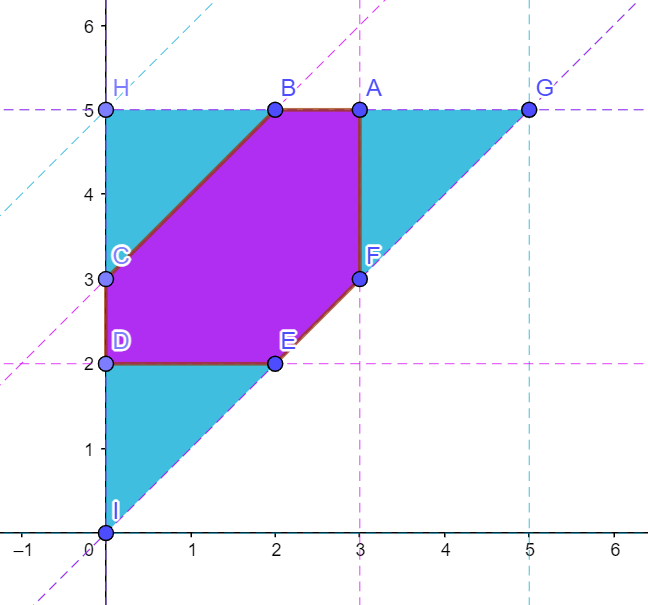So, suppose the digits were \(a_1, a_2, \cdots , a_{10}\) and a_1 is the first digit, a_2 is the second digit, etc.
Note that the first digit can't be 0. So the required number is
\((\#\text{ of cases where }a_1 + a_2+ \cdots + a_{10} = 15) - (\#\text{ of cases where }a_2 + a_3 + \cdots + a_{10} = 15)\)
Each number can be calculated using this theorem described on this wiki page: https://en.wikipedia.org/wiki/Stars_and_bars_(combinatorics)#Theorem_two.
Yes it is 13/25 (Max I think you made a small error)
Here is my contour probability graph
https://www.geogebra.org/classic/dvwq75sb
And here is the pic
The purple area of 6.5 units^2 contains all the favourable outcomes
and the the blue (with purple) area of 12.5 units^2 conatins all possible outcomes.
6.5/12.5 = 0.52 = 13/25
